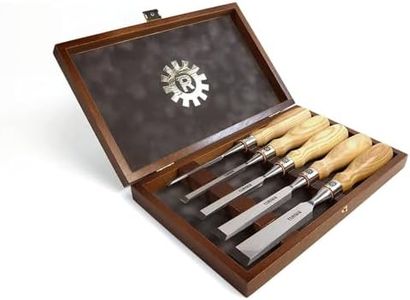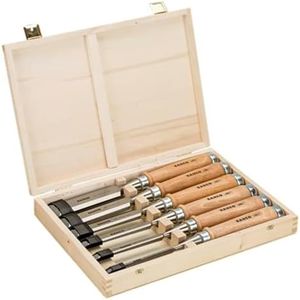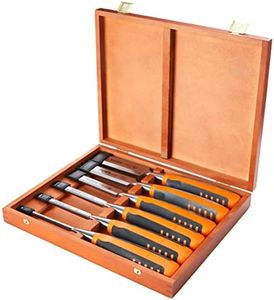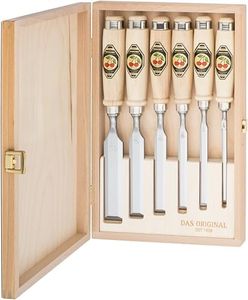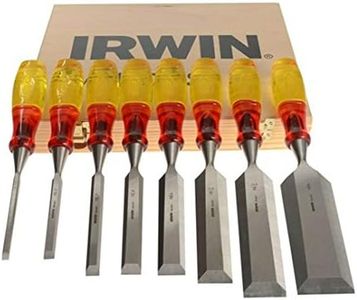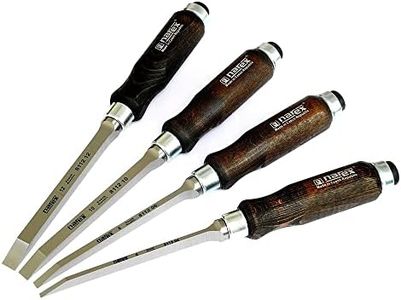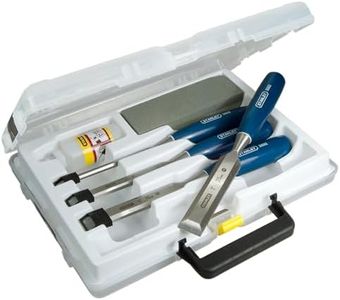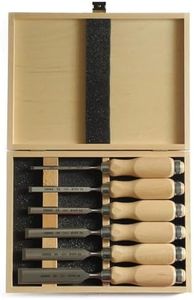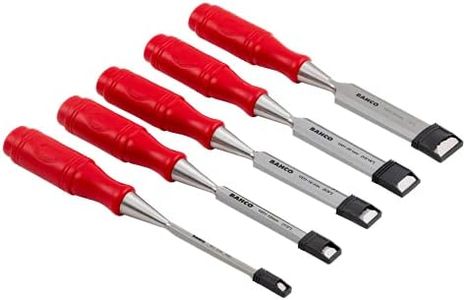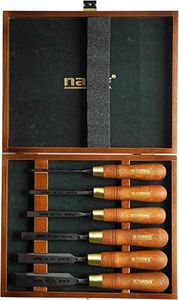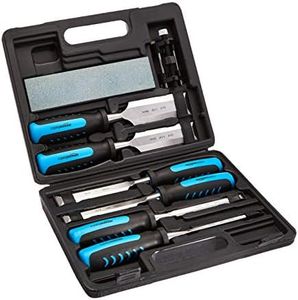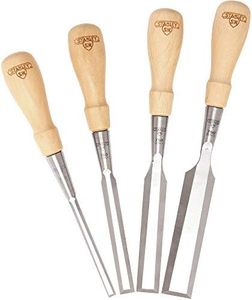We Use CookiesWe use cookies to enhance the security, performance,
functionality and for analytical and promotional activities. By continuing to browse this site you
are agreeing to our privacy policy
10 Best Chisel Sets
From leading brands and best sellers available on the web.Buying Guide for the Best Chisel Sets
Choosing the right chisel set can make woodworking or other crafting tasks much smoother and more enjoyable. When shopping for chisel sets, think about what types of projects you'll be using them for—delicate detailed carving, rough woodworking, or even stone work—and match your selection to those needs. Pay attention to the material of both the chisel blades and the handles, the number of pieces in the set, and other features that affect comfort and usability. Taking the time to understand these aspects will help you pick a set that lasts and fits your unique workflow.Blade MaterialBlade material is crucial because it determines both the durability and sharpness of your chisels. Most commonly, chisel blades are made of high-carbon steel, chrome vanadium steel, or, in some cases, alloyed or stainless steel. High-carbon steel offers excellent edge retention and sharpness but may need a bit more care to prevent rust. Chrome vanadium offers slightly better rust resistance and is durable enough for regular tasks. Cheaper sets use basic steel which can dull quickly. If you do a lot of heavy-duty work or value edge retention, high-carbon steel is the top choice; if you prioritize low maintenance, look for options with more rust resistance. For hobbyists or lighter work, a mid-range steel can be sufficient.
Handle MaterialThe material and construction of the handle directly affect your comfort and control when using the chisel. Handles can be made of wood, plastic, or a composite. Wood feels traditional, absorbs vibrations well, and can provide a good grip, but might crack or wear with hard use. Plastic and rubberized handles are more resistant to impact and moisture, making them suitable for site or heavy work. If you use chisels for fine control and comfort, especially in bench work or hand carving, a high-quality wooden handle might be preferable. For durability and outdoor or site use, synthetic handles might be a safer bet.
Set Size and VarietyChisel sets come with different numbers of chisels and types (such as beveled edge, mortise, paring, and firmer chisels). Larger sets provide more versatility for different tasks and cuts, while small sets focus on essential sizes. For general woodworking, a basic set with a few common sizes (1/4, 1/2, 3/4, 1 inch) might be enough. If you plan on detailed carving or want flexibility for various joinery, a larger set with specialty chisels will be more useful. Always consider what kind of work you’ll do most often—there’s no need to get many specialty chisels if you don’t plan on using them.
Edge TypeChisel edges can be beveled, straight, or even have a rounded profile. Beveled edges are common in woodworking as they allow you to reach into tight corners, making them versatile for many joints and tasks. Straight edges are typically stronger, favoring heavy material removal or mortising. If your main use is joinery or general-purpose woodworking, beveled-edge chisels are a good all-rounder. If you focus on mortising or need extra toughness, straight-edged chisels are preferable.
Blade WidthChisels come in a range of blade widths, typically from 1/8 inch to 2 inches. Narrow blades are good for tight spaces and fine detail, while wider chisels remove more material quickly and work best on large, flat surfaces. When picking, think about the types of cuts and detail in your projects. For furniture making or joinery you'll regularly use 1/4, 1/2, and 3/4 inch chisels, while intricate woodworking or modeling might need thinner options. Wide chisels suit tasks like flattening or preparing large wood surfaces.
Tang vs. Socket ConstructionThe way the blade attaches to the handle affects durability and performance. Tang chisels have a metal end embedded into the handle, while socket chisels fit the handle into a socket at the blade's base. Socket chisels tend to be more robust and last longer under heavy use, making them better for demanding or frequent work. Tang chisels are fine for light or controlled work and are generally a bit lighter and cheaper. Match your choice to how much force and frequency you expect with your chisel sets.
